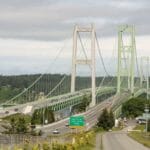- Course No E – 1384
- PDH Units 3.00
No data found for Custom Course Number
No data found for Custom Course Units
- Course No E – 1384
- PDH Units 3.00
Intended Audience: Engineers interested in pipelines & fueling facilities
PDH UNITS: 3
This discussion provides guidance for the design of pipelines. Pipelines are typically either interterminal pipelines which are cross country and connect installations, or installation pipelines which connect petroleum-oil-lubricants (POL) facilities within an installation. The primary differences are that interterminal pipelines cross public and private properties, streets, highways, railroads, and utility rights-of-way, whereas installation pipelines do not. Interterminal pipelines may be dedicated lines connecting two or more facilities or privately owned common carrier lines serving several shippers. In some cases, the shipping facility may consist of a relatively short spur which delivers the fuel to the suction side of a pumping station which is part of the main line of a larger pipeline system. Pipeline receiving and dispensing facilities are normally part of a bulk fuel storage facility. Course Outline 1. INTERTERMINAL AND INSTALLATION PIPELINES 2. GROUND PRODUCTS FUELING FACILITIES This course will give engineers and others an introduction to piping systems for petroleum fuel handling applications.
Learning Objectives
At the successful conclusion of this course, you’ll be able to identify and discuss:- Learn the fundamentals of fuel desegregation;
- Learn about the application of positive displacement flow meters;
- Learn about where and when to install isolation valves;
- Learn about application of ball valves;
- Learn about the different types of valve operators;
- Learn about check valve applications; and
- Learn about isolation valves.
Once completed, your order and certificate of completion will be available in your profile when you’re logged in to the site.










